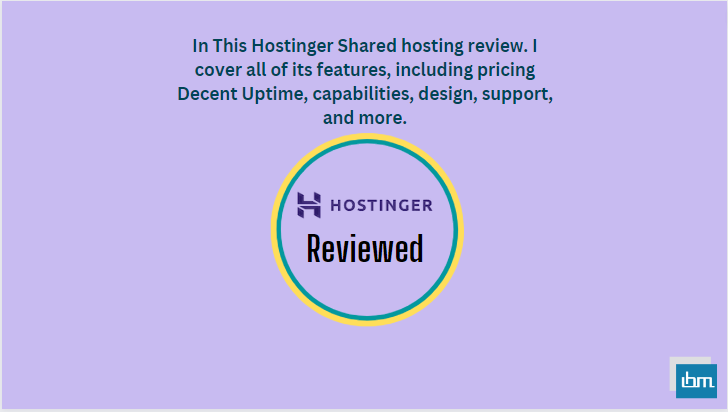Reviewed by: Jayprakash Prajapati | Last updated on October, 1, 2025
Average Cost to Build an Online Course In India. Creating an online course in India has become an increasingly popular way to share knowledge and skills while generating income.
As the demand for online education continues to rise, understanding the cost to build an online course in India is essential for aspiring course creators.
The costs associated with developing an online course can vary significantly based on several factors, including content complexity, production quality, and marketing strategies.
The average investment can range from INR 50,000 to over INR 3,00,000, depending on the depth and breadth of the course material. Key elements that influence these costs include the choice of platform, multimedia production expenses, and the expertise required for content development.
For instance, creating a comprehensive course with interactive elements and high-quality video production will generally incur higher costs than a simple, text-based course.
Additionally, the choice of technology and tools, such as Learning Management Systems (LMS) and video editing software, can also impact the overall budget.
Moreover, marketing and promotional efforts are crucial to ensure the course reaches the intended audience, which can further add to the initial costs.
As the online education landscape evolves, understanding these financial considerations will help course creators effectively plan and execute their projects, ensuring a successful launch and sustainable growth in the competitive e-learning market.
What is Cost to Build an Online Course In India?
Learn about the various expenses associated with developing an online course in India. Get insights on budgeting and maximizing your investment for success.
The online education market in India has seen exponential growth, driven by increased internet penetration, the rise of e-learning platforms, and a growing demand for skill development. As more individuals seek flexible learning options, the potential for creating and selling online courses has never been higher.
- The Indian e-learning market is projected to reach USD 8.6 billion by 2026.
- Over 70% of learners prefer online courses for their flexibility and accessibility.
Factors Influencing the Cost of Building an Online Course.
Several factors impact the overall cost of developing an online course in India:
- Course Content Development: The complexity and depth of the content significantly affect costs. Creating high-quality, engaging content often requires hiring subject matter experts, instructional designers, and content writers.
- Platform Selection: The choice of platform (e.g., Teachable, Udemy, or a self-hosted website) can influence costs. Each platform has its pricing model, including subscription fees, transaction fees, or a one-time payment.
- Technology and Tools: Costs associated with video recording equipment, editing software, and learning management systems (LMS) can add up. Investment in quality tools enhances the course’s production value.
- Marketing and Promotion: Budgeting for marketing efforts, including social media ads, SEO, and email marketing, is essential to reach your target audience effectively.
- Ongoing Maintenance and Support: Post-launch, consider costs for updates, customer support, and community engagement.
Breakdown of Costs to Build an Online Course.
Here’s a detailed breakdown of the average costs involved in building an online course in India in 2025:
Content Development.
- Scriptwriting and Course Design: INR 20,000 – INR 50,000
- Video Production (including editing): INR 30,000 – INR 1,00,000
- Graphic Design: INR 5,000 – INR 20,000
Platform and Technology.
- Learning Management System (LMS) Subscription: INR 1,000 – INR 10,000 per month
- Website Development (if self-hosted): INR 15,000 – INR 50,000
- Video Hosting (e.g., Vimeo, YouTube): INR 500 – INR 5,000 per month
Marketing Costs.
- Social Media Advertising: INR 5,000 – INR 30,000
- Email Marketing Tools: INR 1,000 – INR 5,000 per month
- SEO and Content Marketing: INR 10,000 – INR 50,000
Total Estimated Cost.
Considering the above factors, the total cost to build an online course in India can range from INR 50,000 to INR 3,00,000, depending on the complexity and scale of the course.
Step-by-Step Guide to Building an Online Course.
Step 1: Define Your Target Audience.
Understanding who your audience is will guide your course content, marketing strategies, and pricing. Conduct surveys or interviews to gather insights about their needs and preferences.
Step 2: Choose a Course Topic.
Select a topic that aligns with your expertise and interests, ensuring it has market demand. Tools like Google Trends and keyword research can help identify popular subjects.
Step 3: Develop Course Content.
- Outline Your Course: Create a detailed outline of your course modules and lessons.
- Create Engaging Materials: Develop videos, slides, quizzes, and downloadable resources that enhance learning.
Step 4: Select the Right Platform.
Choose a platform that suits your needs. Consider factors like ease of use, customization options, and pricing. Popular options include:
- Teachable
- Udemy
- Thinkific
- Self-hosted WordPress with LMS plugins
Step 5: Produce Your Course.
Invest in quality production. Use good recording equipment and editing software to ensure professional-looking videos.
Step 6: Launch and Market Your Course.
Develop a marketing strategy that includes:
- Social Media Promotion: Utilize platforms like Facebook, Instagram, and LinkedIn to reach potential learners.
- Email Marketing: Build an email list and send newsletters to promote your course.
- Webinars: Host free webinars to attract interest and provide value upfront.
Step 7: Gather Feedback and Improve.
After launching your course, collect feedback from students to identify areas for improvement. Regular updates and enhancements can increase student satisfaction and retention.
SEO Strategies for Your Course Website.
To ensure your course reaches its target audience, implementing effective SEO strategies is crucial:
- Keyword Research: Identify relevant keywords related to your course topic and incorporate them into your website content.
- Optimized Content: Create blog posts, articles, and resources that provide value and include your target keywords.
- Backlink Building: Collaborate with influencers or bloggers in your niche to gain backlinks to your course website.
- Social Media Engagement: Share valuable content on social media to drive traffic to your course site.
Pricing Your Online Course.
Determining the right price for your online course is crucial for attracting students and generating revenue. Consider factors such as:
- Target audience: Understand their willingness to pay and the value they perceive in your course.
- Course length and depth: Longer, more comprehensive courses typically command higher prices.
- Competitor pricing: Research what similar courses are priced at to stay competitive.
- Perceived value: Ensure your course price reflects the value it provides to students.
A common pricing strategy is to offer a range of pricing tiers, such as a basic package with limited features and a premium package with additional resources or support. This allows you to cater to different budgets and preferences.
Monetization Strategies.
Beyond selling your course directly, there are various monetization strategies you can explore:
- Affiliate marketing: Partner with relevant bloggers, influencers, or websites to promote your course and earn a commission on sales.
- Upsells and cross-sells: Offer additional courses, coaching, or resources to students who have already purchased your main course.
- Memberships: Create a membership site where students pay a recurring fee for access to your course and other exclusive content.
- Corporate training: Offer customized versions of your course to businesses for employee training and development.
Scaling Your Online Course Business.
As your online course business grows, consider these strategies to scale effectively:
- Create multiple courses: Develop additional courses on related topics to expand your offerings and reach a wider audience.
- Hire a team: Bring on subject matter experts, instructional designers, and marketing professionals to help create and promote your courses.
- Automate processes: Use tools and software to streamline tasks like customer support, content updates, and email marketing.
- Leverage partnerships: Collaborate with other online course creators, influencers, or industry experts to cross-promote and expand your reach.
Measuring Success.
To gauge the success of your online course, track key metrics such as:
- Enrollment rates: Monitor the number of students enrolling in your course over time.
- Completion rates: Assess how many students complete your course compared to those who enroll.
- Student satisfaction: Collect feedback and ratings from students to gauge their satisfaction with the course content and delivery.
- Revenue and profitability: Track your course’s revenue and expenses to measure its overall profitability.
By regularly monitoring these metrics, you can identify areas for improvement and make data-driven decisions to optimize your online course business.
Case Studies.
Udemy: Scaling a Successful Online Course Platform.
Udemy, a leading online course platform, has successfully scaled its business by:
- Offering a wide range of courses across various topics, catering to diverse learner interests.
- Providing a user-friendly platform with features like mobile apps and offline access to enhance the learning experience.
- Leveraging its large user base to drive course sales and generate revenue for instructors.
As of 2025, Udemy has over 50 million students enrolled in its courses, with over 200,000 courses available on the platform.
Teachable: Empowering Creators to Build Online Courses
Teachable, another popular online course platform, has gained traction by:
- Offering a simple, intuitive interface that makes it easy for creators to build and launch their courses.
- Providing a range of customization options to help creators brand their courses and create a unique learning experience.
- Offering a variety of pricing plans to accommodate creators with different needs and budgets.
As of 2025, Teachable has helped over 100,000 creators build and sell their online courses, with over 30 million students enrolled across the platform.
Frequently Asked Questions.
The cost to create an online course in India can range from INR 50,000 to INR 3,00,000, depending on factors such as course content, platform selection, technology and tools, marketing, and ongoing maintenance.
Some of the most popular online course platforms in India include Udemy, Teachable, Coursera, and Simplilearn. Each platform offers different features, pricing models, and target audiences.
Effective promotion strategies for online courses include social media marketing, email marketing, webinars, influencer collaborations, and content marketing. It’s important to understand your target audience and tailor your marketing efforts accordingly.
To create engaging course content, focus on creating high-quality videos, interactive quizzes, downloadable resources, and real-world examples. Break your content into bite-sized modules and lessons to maintain learner interest and attention.
To ensure the success of your online course, focus on providing value to your students, regularly updating and improving your course content, offering excellent customer support, and continuously promoting your course to attract new enrollments.
Conclusion.
Building an online course in India can be a lucrative and rewarding venture, but it requires careful planning, investment, and ongoing effort.
By understanding the costs involved, leveraging effective monetization strategies, and continuously improving your course offerings, you can build a successful online course business that meets the growing demand for online education in India.
Building an online course in India presents a significant opportunity for educators and entrepreneurs. While the costs can vary widely based on several factors, a well-planned approach can lead to a successful course that meets the needs of learners.
By following the outlined steps and implementing effective SEO strategies, you can maximize your course’s visibility and impact in the growing online education market.
This guide provides a comprehensive overview of the average costs and steps involved in building an online course in India. By understanding these elements, you can make informed decisions and successfully launch your online course.





